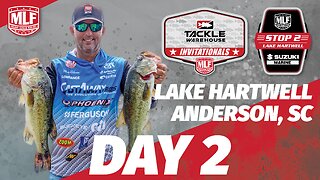Premium Only Content

The Traditional Family Cow
The Traditional Family Cow is the topic of today’s podcast. She has just about been pushed out of existence. Lots of us are trying to revive this wonderful, quality food source.
I want to take a minute and say welcome to all the new listeners and welcome back to you veteran homestead-loving regulars who stop by the FarmCast every week. I appreciate you all so much. I’m so excited to share with you what’s going on at the farm this week.
Today’s Show
• Homestead Life Updates
• The Traditional Family Cow
• Crab & Artichoke Dip Recipe
Homestead Life Updates
The cows are doing great. Every day, twice a day, I walk out there and find them grazing peacefully on the grass. I circle around behind them and start calling out, “let’s go, let’s go” and they all start toward the milking shed. They walk pretty slow. Sometimes inside I’m all raring to go and I want to push them a little faster—as if the milking machine would go any faster—and they never really cooperate. They move pretty much at their own pace no matter now anxious I might be. Scott has Butter already up in the shed hooked up to the portable milker. So these guys are just mozying along at a slow pace on their way to the lounging area. That’s where they will hang out until Scott gets done milking Butter. No need to hurry. I’ll take a lesson from them and endeavor to maintain my inner peace. It’s a nice daily ritual.
Lambert does not come running anymore. We weaned him off the bottle about a week ago. I still feel like I’m missing something when I go out to the field. Shouldn’t I be doing something else before bringing in the cows? Oh well, it will pass. And every once in a while, he still comes running up looking for a bottle and I can give him a little petting.
The donkeys sure love their petting. All four of them got their hooves trimmed a few days ago. Daisy and Sweet Pea just stand their placidly—for the most part. They do shimmy a little bit every now and then. But Johnny and Cocoa still dance around a lot. They try to lay over all of their weight on Scott while he is holding up one of their hooves. Or they jerk that hoof around while he is trying to hold it. Cocoa had a little mishap when she did that. The grinding tool that Scott uses to file their hooves nicked her. We put some pine tar on it to keep the flies out and it looked to be a small enough scrape to heal in a few days.
We weaned the one boy kid from his mom a couple of days ago. He’s merged in with the other boy goats. We have six in there now and four sheep. One ram and 3 lambs that will go to the processor soon. Let us know if you are interested. I know I always talk about Wytheville, but if you are in the Winston-Salem or Greensboro, NC area we can help you there too. Pass this along to anyone you know who might be interested.
I still haven’t got the onions out of the garden. Perhaps this week I can get to that. The tomatoes are looking really good as are the black, red, and white beans and the Mississippi Silver crowder peas. Yum, yum.
I wonder how the blueberries are doing. The birds are probably having a field day out there. It has been more than 4 or 5 days I think since I picked them last. I canned eight 24-oz jars of blueberry pie filling and froze two quarts of fresh blueberries that will go in pancakes and yogurt. More yum, yum.
Let’s get on to the topic of the day.
The Traditional Family Cow
In a previous podcast I talked about The Tradition of Dairying. I gave a brief history and finished up with the growth of the large dairies in the 20th century. Today I want to follow up on that and talk more specifically about small dairy farms and the family cow.
What was happening to the family cow while commercial dairying was being conformed to the 20th century model of food as commodity? Along with small farms of every sort, she was being priced out of existence. If you talk to old-timers you will hear the statement, “it doesn’t pay to keep a cow.” American food is cheap, or at least appears to be. Starting early in the 20th century, an elaborate system of subsidies has kept food prices artificially low, part of a cheap food policy that brands food as a commodity and the cheaper, the better. Quality is an afterthought if it comes up at all.
This policy has been continued by every administration. Perhaps you are familiar with farm subsidies, payments to farmers designed to assist them in producing their products at predictable levels. Among the less frequently recognize effects of subsidies is that by covering part of a farmer’s costs, he or she is then able to accept a lower price for the crops or milk, so you pay less for food. Pointed out even less frequently is the government assistance that goes to processors. Everything from special university research projects to tax-deferred production plants may be paid for wholly or in part by tax dollars. Highway costs are shared by all taxpayers but benefit truckers—and the food industry—disproportionately. This is sometimes referred to as corporate welfare. These are some of the hidden costs of cheap food. In reality, you are paying more for your food from the grocery store than you may have realized. It’s just harder to see it because it is in the form of taxes. It is you and I, the taxpayers, that are paying the money in the form of taxes that then goes to the farmer, the processor and the transportation industry all via subsidies.
With food costs comparatively low, even the formidable efficiency of the cow is hard put to offer an obvious fiscal advantage. Milk prices are low because dairy farmers, even taking rapidly diminishing subsidies into account, are paid at a rate that barely covers costs and they cannot market their milk freely. They must sell to consortiums under fixed contracts that are government regulated. And processors have certainly made milk conveniently available to markets. If a plot had been hatched to eliminate small farmers, place milk production and distribution in the hands of a few, and permit almost everybody to forget what milk was meant to taste like, a better plan could not have been devised. Consider also that in terms of buying power, American wages were high during the first 60 years of the 20th century and our dollars still buy more food than in any other westernized country. So keeping a cow does indeed cost more than buying milk at the store.
Most people considering getting a family cow are no longer motivated by the old-timer view that the object of a cow is to “pay”, reasonable as this may be. Quality dairy products and the desire for a more centered way of life are what people now want. Cost is secondary.
Treatment of commercial milk
Pasteurization has its detractors and I am among them, but there is no doubt that milk distribution as we know it today would otherwise be impossible. The creation of the current distribution network ensured the destruction of the small, local dairy farm.
Pasteurization destroys all bacteria including benign strains and it destroys enzymes, besides physically altering milk protein. In addition, by the 1950s virtually all milk was also homogenized. ‘Pasteurized and homogenized’, which appear on every container of milk, are not really related at all. They came about for different reasons. “Homogenized” means the milk is subjected to pressure and agitation which knocks apart the butterfat globule and stops it from doing what cream would naturally do: rise to the surface. This, too, was presented to you, the consumer, as a great advance but first and foremost it served the distributor. Back in those days everybody wanted cream, but after its pasteurization treatment with heat the cream was lumpy and unimpressive. Homogenization offer the advantage of distributing the cream evenly throughout the milk.
The advantage for distributors was less charming. Once pasteurization made it possible to sell milk two or even three weeks after it left the farm there emerged a problem with a sort of sludge settling to the bottom of the bottle. This sludge largely consisted of dead bacteria and the macrophages that consumed them, and the longer the bottled milk sat, the more evident the sludge. With homogenization it becomes invisible along with the cream. Don’t let me put you off store-bought milk all together. Worst things are in ketchup and peanut butter.
This might seem reason enough to get a cow herd share with us, but wait. There is more. Now we have BGH, bovine growth hormone, to consider. Consumers have expressed virtually unanimous objection to the fact that milk may now legally contain BGH which is passed into the milk as a result of the cow’s daily injection. The history of milk distribution does not offer much reassurance that your concerns will end the practice. Antibiotics, contrary to widespread belief, are never fed to dairy cattle; nonetheless, they sometimes do find their way into milk following teat treatment.
The cow as security
Does the future seem uncertain to you? One of the best ways to take charge of your own future that of your family is to raise and grow your own food. This is a life-affirming choice of action and one that may well offer better odds than going about armed to the teeth. Inasmuch as this is hardly a new idea, many schemes for self-sustaining food systems have been devised and revived from traditional methods. One method involves growing algae in vats on the roof. Another promotes earthworms and other insects as ideal basic food. There are systems for backyard fish ponds capable of growing many pounds of fish called tilapia by adding manure and other waste to their water. Some people advocate growing family size patches of soybeans along with other vegetables to provide food security. All of these approaches offer food security of a sort, along with major problems. Algae tastes awful, insects don’t appeal to the Western palette, tilapia are nourishing but boring. An all-vegetable diet is seriously boring and is extremely labor-intensive. I recommend the cow.
If the biggest animal you’ve ever known personally was a golden retriever, the cow may seem like a giant step into the unknown. We can help with that. With a herd share we will do all the work and you still get the benefit of raising your own food.
Amazing cow magic that most people don’t know about
An overarching truth about the traditional family cow is that she drives your small farm economy. By living on a constantly renewing resource, grass, she is able to support herself and her calf and still provide milk for you. And a cow does this on a free resource made of water and sunshine. Through her sovereign ability to convert grass, which otherwise has no value, to milk and meat, which does have value, the cow produces a wealth of nutrition.
Crab & Artichoke Dip Recipe
Dip into this rich and creamy snack and a favorite bottle of wine. Use your slow cooker to make this recipe—it’s a perfect fit for a relaxed “friends” night.
This recipe is keto-friendly if you leave off the crackers and dip your bacon in it.
TOTAL TIME:
Prep: 20 min. Cook: 2 hours
YIELD:
3-1/2 cups.
What You Need
• 3 cups fresh baby spinach
• 1 can (14 ounces) water-packed artichoke hearts, rinsed, drained and chopped
• 1 package (8 ounces) cream cheese, softened
• 2 cups shredded Peaceful Heart Gold cheese (or substitute Harvarti)
• 1 can (6 ounces) lump crabmeat, drained
• 1/2 cup sour cream
• 1/8 teaspoon salt
• 1/8 teaspoon pepper
• Assorted crackers (or bacon if you go keto)
What to Do
1. In a large saucepan, bring 1/2 in. of water to a boil. Add spinach; cover and boil for 3-5 minutes or until wilted. Drain.
2. In a 1-1/2-qt. slow cooker, combine the artichokes, cheeses, crabmeat, sour cream, salt, pepper and spinach. Cover and cook on low for 2-3 hours or until cheeses are melted. Serve with crackers—or BACON.
Nutrition Facts
1/4 cup (calculated without crackers): 158 calories, 12g fat (8g saturated fat), 50mg cholesterol, 279mg sodium, 3g carbohydrate (1g sugars, 0 fiber), 9g protein.
Notes
Peaceful Heart Gold matches well with sugary fruits like figs, raisins, walnuts, hearty, rustic bread, Chardonnay, Sauvignon Blanc, and light-bodied Pinot Noir wine.
Just as it accommodates spices and other flavors, Peaceful Heart Gold’s creamy-smooth, tangy flavor complements a wide variety of foods. You can shred it on a pizza instead of—or in addition to—mozzarella. It melts beautifully over burgers and in casseroles, and is fabulous in a grilled cheese.
Final Thoughts
That’s it for today’s farm updates and thoughts on the family cow. If you’re interested in that herd share, get in touch with me via email (give email address). You can also contact me through the website. www.peacefulheartfarm.com and go to the contact page. Call us at the farm at 276-694-4369. We’d love to talk with you in person. And give that recipe a try then go to the recipe page and provide your feedback in the comments. Let others know how you did with it and any modifications you made.
If you enjoyed this podcast, please go to Apple Podcasts and write a review. And don’t forget to subscribe. Also, please share it with any friends or family who might be interested in this type of content.
As always, I’m here to help you “taste the traditional touch.”
Thank you so much for stopping by the homestead and until next time, may God fill your life with grace and peace.
Recipe Link
Crab and Artichoke Dip
To share your thoughts:
• Leave a comment on our Facebook Page
• Share this show on Twitter, Facebook and Instagram
To help the show:
• PLEASE LEAVE A REVIEW for Peaceful Heart FarmCast on Apple Podcasts.
• Subscribe on iTunes, Stitcher Radio, Google Play Music, TuneIn or Spotify
• Donate on Patreon
Website
www.peacefulheartfarm.com
Patreon
www.patreon.com/peacefulheartfarm
Facebook
www.facebook.com/peacefulheartfarm
Instagram
www.instagram.com/peacefulheartfarm/
-
 17:54
17:54
The Rubin Report
3 hours agoTechnology Utopia or Dystopia? Eric Weinstein, Laila Mickelwait & James Poulos
24.8K24 -
 1:12:29
1:12:29
Mike Rowe
2 days agoWHY Is America The Biggest Lumber Importer In The World? | Mike Albrecht #428 | The Way I Heard It
39.7K40 -
 1:19:23
1:19:23
Steve-O's Wild Ride! Podcast
2 days ago $7.09 earnedMrBallen Blows Steve-O's Mind With Insane Stories - Wild Ride #254
32.4K15 -
 2:27:21
2:27:21
I_Came_With_Fire_Podcast
13 hours agoTURKEY is the DARK HORSE NATO Nation That Could START WW3
37.6K7 -
 2:13:40
2:13:40
Rotella Games
23 hours agoFamily Friendly Saturday Morning Fortnite
21.3K -
 LIVE
LIVE
Major League Fishing
2 days agoLIVE Tackle Warehouse Invitationals, Stop 2, Day 2
268 watching -
 4:59:34
4:59:34
SoundBoardLord
7 hours ago90's Cartoons, Chill Vibes, Good Conversations!
23.1K2 -
 9:52
9:52
Talk Nerdy Sports - The Ultimate Sports Betting Podcast
4 hours agoEpisode 3/15/25 - Sportsbooks Won Last Night. Not Tonight. No more excuses. No more heartbreaks!
31.5K2 -
 15:17
15:17
Shea Whitney
1 day ago $6.03 earnedI Used CASTOR OIL for 30 Days and THIS Happened!!!
33.6K27 -
 30:24
30:24
The Rad Factory
1 day ago $3.50 earnedI Bought The WORST Formula 1 Car On Marketplace
35.6K8